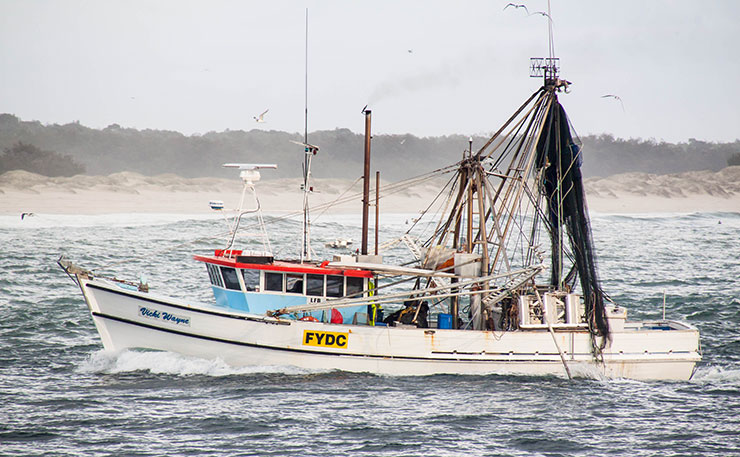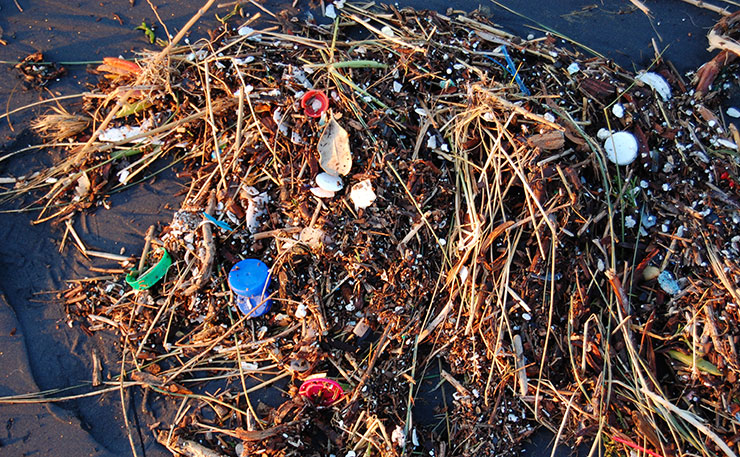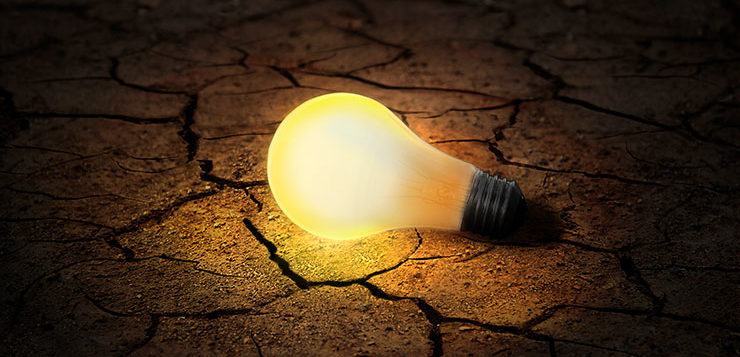Reducing waste is a good thing. Unless you believe that it’s the most important way to save our natural heritage. Geoff Russell brings you some uncomfortable truths about the war on waste.
Who remembers when Tim Flannery made those quaint little TV ads telling people to turn off lights to fight climate change? How many people were actually mislead into thinking it was that easy?
Now we are getting the same kind of well-meaning but thoroughly deceptive kind of thing happening with marine plastic pollution. All we hear about is coffee cups, straws and plastic bags and nothing at all about the biggest threat to marine animals and ocean eco-systems.
It’s like trying to fix the road toll by focusing on skateboards.
The ABC’s War on Waste seems to have sparked the current wave of well-meaning but totally ill-informed plastic outrage. It was a spectacular success for the National Broadcaster. How could anybody produce not one, but two series about garbage? The magic ingredient is that it wasn’t about garbage, it was about waste. Waste conveys a moral repugnance missing from mere garbage. Everybody produces garbage, but people who produce waste are simply evil.
Marine plastic pollution has a special position in any discussion on waste because marine plastic pollution is waste acting badly; very badly. It kills seabirds, marine mammals like whales, dolphins, sea otters, manatee, seals, and sea lions, marine reptiles like turtles, crocs and snakes, not to mention fish, molluscs and crustaceans; except that I did mention them. Most animals killed by plastic are never named; they are fish-and-chip-fodder. The ones getting all the coverage are those who are iconic; because we don’t eat them.
And there’s the rub. When you start looking at the actual harm done by marine plastic pollution, it turns out that most of it is a consequence of killing the ones we don’t mention; typically called seafood by people who eat them. Fishing and fish eating has been totally ignored as the wheels of the plastic waste band-wagon start to gather pace.
Scientists have been studying marine plastic pollution for decades. A major 1987 paper reviewed even earlier work and drew attention to entanglement of animals by nets, and also to ingested plastics damaging stomach linings and blocking or perforating digestive tracts. It gave no estimates of numbers dying from ingested plastic but estimated that 214,500 — 763,000 seabirds were killed annually by driftnet entanglement in the North Pacific Ocean alone. This estimate was fairly crudely done by counting dead seabirds in a driftnet of a known length and then scaling up based on an estimate of the length of nets deployed.

A 2014 CSIRO paper used some much, much smarter mathematics and modelling to look at a much smaller question; the impact of ghostnets (lost or deliberately discarded nets) on marine turtles in northern Australia. The base data was records from Aboriginal rangers recording dead turtles in ghost nets washed ashore along our northern coast. It came up with an estimate of 4,866 — 14,600 turtles per year. The paper also pointed out that the number of ghostnets drifting around the ocean is growing rather than declining.
While many plastics are designed to be as flimsy and cheap as possible, and break apart with exposure to sunlight, fishing nets are designed to last; which means ghostnets can keep killing for years or perhaps even a decade. Their killing usually only stops when they fortuitously run aground.
But fishing industry nets and lines start killing well before gear is lost or discarded. And the toll is measured not in thousands of animals, but millions of tonnes. Millions of tonnes of fish and millions of tonnes of collateral damage, usually called bycatch. This includes anything you can imagine living in and on the ocean, along with many marine animals that rarely rate a mention. The little things that get caught in fishing’s crossfire.
Fishers don’t just throw out nets and wait for stuff to get caught, they trawl; meaning they drag nets through the water or along the bottom. Bottom trawling smashes everything in its path. You can find a nice description on the Australian Fisheries Management Authority website. Huge boards made of timber and steel are dragged along the bottom to hold the net open and close to the sea-floor where things like prawns live. Nothing quite screams “Screw the ocean” like prawns. Buying them in a paper bag instead of plastic is like cutting off a leg but applying a dressing to the stump.
Most fish industry killing is intentional, it’s what fishers do. But estimates of global bycatch run at about 40 percent; which is over 30 million tonnes for ocean fisheries. The toll from ghostnets is over and above that.

About 2/3rd of fish consumed in Australia is imported. So it doesn’t much matter whether you think our trawling is well regulated, like our live animal export industry (irony alert), or like our mulesed sheep wool industry, or our meat industry (warning, very graphic footage alert), fish from other people’s oceans are caught by their rules. So anybody who eats commercially caught fish is part of the global fishing, bycatch and ghostnet juggernaught.
There is an area of the Pacific Ocean which is about twice the size of NSW and which contains some 80,000 tonnes of ocean plastic which has been accumulated by ocean currents. It is called the Great Pacific Garbage Patch and some 46 percent of it is fishing nets.
If you took a 100 kg lump of plastic and tried to work out how to transform it into a configuration to kill the maximum number of animals, you’d be hard put to beat making it into a good quality, long-lasting fishing net.
So where do plastic straws and coffee cups fit into this picture? There is no doubt that straws can kill. There is a particularly distressing clip of biologists removing a straw from a turtle’s nose. It’s a well-known flaw in human nature that the suffering of one child or turtle can profoundly affect us, but facts about millions of tonnes of bycatch are like water off a duck’s back. Perhaps there’s a connection missing in our brains between our empathic regions and numeracy centers.
Other kinds of plastic can kill by entanglement or when ingested by blocking, damaging, and even perforating an animal’s gut. However, most plastic eaten by us or marine animals passes straight through the gut and is excreted. Studies on crayfish with micro-plastics (particles <5mm) demonstrate this. Other studies show potential health problems, particularly with plastic in strands which tend to tangle in the guts rather than pass through. Where do you get plastic strands from? Fishing nets and nylon ropes. Guess which industry is a very heavy user of nylon ropes? Too easy.
There is also work showing sub-lethal impacts for marine animals of eating plastic. So I’m not trying to suggest that all other plastic pollution is benign. I’m merely trying to rank problems in order of seriousness.
A 2015 paper estimated that about 8 million tonnes of plastic entered the ocean in 2010. That study predicted about 75 million tonnes would enter the ocean in 2018.

This estimate considered plastic use by people within 50km of the coast in 192 countries and the state of waste management and littering in those countries. Developed countries typically have sophisticated waste management systems relative to developing countries. Comparing, for example, China and the US, the amount of mismanaged and littered plastic annually in the coastal population was about 8.8 million tonnes in China compared to 275,000 tonnes in the US. That’s a per person ratio for the coastal Chinese population relative to that in the US of about 14 to 1.
Comparing Australia with the US shows that our per person litter and mismanaged plastic is about 1/3 that of the US. Some of this mismanaged plastic enters the ocean. The 2010 estimate for Australia was around 14,000 tonnes of plastic entering the ocean with this expected to rise to 24,600 tonnes by 2025.
So, unlike our energy industry, which is far more polluting than other rich countries, our waste management systems are decidedly better than average. Our landfill sites, for the most part, are actually designed rather than appear by accident. Meaning they take ground water and ocean proximity into account.
We have bins on beaches and people mostly use them. There are some gross exceptions of course, New Years Eve and other such celebrations where vast throngs of people leave piles of detritus in a seemingly deliberate effort to link the size of the garbage pile with the quality of the great time they had. But then in the morning we deploy an army of garbage collectors who work a minor miracle and clean it up.
But the War on Waste is winning. A friend recently told me of problems at her child’s school because said child had arrived at school with lunch in a plastic bag. And in the run up to Christmas we are being told to make it plastic free; without a mention of prawns or lobsters. The Greens meanwhile have got at least 4 plastic “fact” sheets and policy documents on their various websites.
You won’t find a single mention of fishing or bycatch or ghostnets; but the Victorian Greens promise a Coffee Cup Task Force. You could call it an homage to Tim Flannery and those light switches.
Donate To New Matilda
New Matilda is a small, independent media outlet. We survive through reader contributions, and never losing a lawsuit. If you got something from this article, giving something back helps us to continue speaking truth to power. Every little bit counts.




